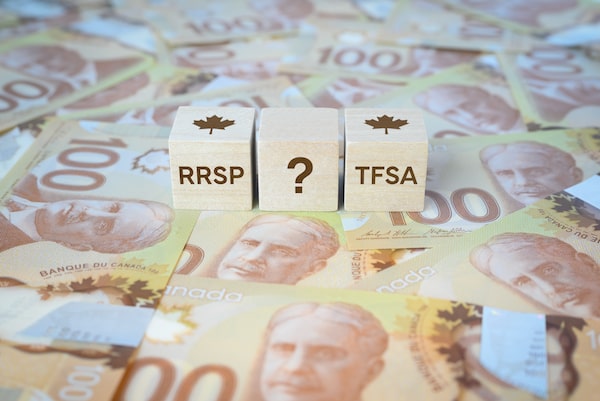
One factor in the popularity of TFSA is that TFSAs are funded by after-tax dollars, whereas, with RRSPs, people get a tax deduction when they contribute and then pay tax on withdrawals.Kenneth Cheung/Getty Images
If you want to build a powerful brand in personal finance, try using the phrase “tax-free.”
Submitted as evidence: The impressive and mostly justified popularity of the tax-free savings account, which is drawing ever more money in contributions each year than registered retirement savings plans. This is happening despite the fact that the contribution limit this year is $7,000 for TFSAs and as much as $31,560 for RRSPs.
The popularity of TFSAs was summed up well by an adviser who got in touch recently. He said the bottom line is that TFSAs are funded by after-tax dollars and so have no strings attached. With RRSPs, you get a tax deduction when you contribute and then pay tax on withdrawals.
The tax-free aspect of TFSAs is powerful, but it doesn’t always mean you pay the least tax if your goal is saving for retirement. Here are some tax-forward points to consider in deciding whether to use TFSAs, RRSPs or non-registered accounts.
It’s helpful to have an idea of your income in retirement
RRSPs look good in situations where your tax rate in retirement will be less than it is at the time you make an RRSP contribution. The amount of the tax deduction for your contribution should be higher than the tax paid on a withdrawal in retirement. For example, an Alberta resident would go from a marginal tax rate of 38 per cent on income of $150,000 to 30.5 per cent on $100,000.
RRSP critics like to point out that some people end up in a higher or similar tax bracket in retirement. The hefty tax hit on withdrawals from RRSPs or registered retirement income funds in this situation is a major irritant.
A lesson here for people in their peak earning years is to estimate their retirement income before deciding between TFSAs, RRSPs or non-registered investing. A good resource for this task is the Canadian Retirement Income Calculator. It’s offered by the federal government, so there’s no sales pitch for financial products or advice.
The province where you live matters
The EY 2024 personal tax calculator shows a dramatic difference in tax rates between provinces. Those Alberta marginal tax rates cited above compared with 43.5 per cent in Nova Scotia on incomes of $150,000 and 38 per cent on incomes of $100,000. The more tax you pay, the greater the urgency in making a sound choice between TFSAs and RRSPs.
Non-registered accounts aren’t the answer to RRSP tax issues
The EY tax calculator shows how much less tax you pay on dividends and capital gains compared with regular income, including RRSP or RRIF withdrawals. For example, an Ontario retiree with income of $75,000 would have a marginal tax rate of 29.7 per cent on regular income, 14.8 per cent on capital gains and just 7.6 per cent on dividends from publicly traded corporations.
Lost in this comparison is the tax-sheltered compounding that RRSPs provide. In a non-registered investment account, tax is a near- and long-term annoyance. Dividends and interest are taxed in the year you receive them, and capital gains for a stock or fund must be calculated using the adjusted cost base. This can get complicated if you buy and sell shares frequently or you own investments paying a return of capital.
Young people can hardly go wrong with TFSAs
There’s hardly a more clear-cut case for TFSAs over RRSPs than for young people in the early phase of their career with an income that will rise considerably over time. In this case, the tax hit on a withdrawal from an RRSP or RRIF in retirement would exceed the tax deduction on money contributed years earlier to the RRSP.
With a TFSA, there’s an opportunity to contribute with lightly taxed money and then make a retirement withdrawal later in life that is immune to the presumably higher marginal tax rate in place then. A young Quebecker with an income of $45,000 would have a marginal tax rate of 26.5 per cent. If this individual saves well and generates $120,000 per year in retirement income, the comparable tax rate would be 45.7 per cent.
TFSAs are much more flexible than RRSPs in that you can more easily withdraw money and replace it later on. This is both a virtue and a negative in that TFSA money you put away for retirement in your 30s could easily be withdrawn in your 40s or 50s for a home renovation, vacation or whatever.
Are you a young Canadian with money on your mind? To set yourself up for success and steer clear of costly mistakes, listen to our award-winning Stress Test podcast.
 Rob Carrick
Rob Carrick